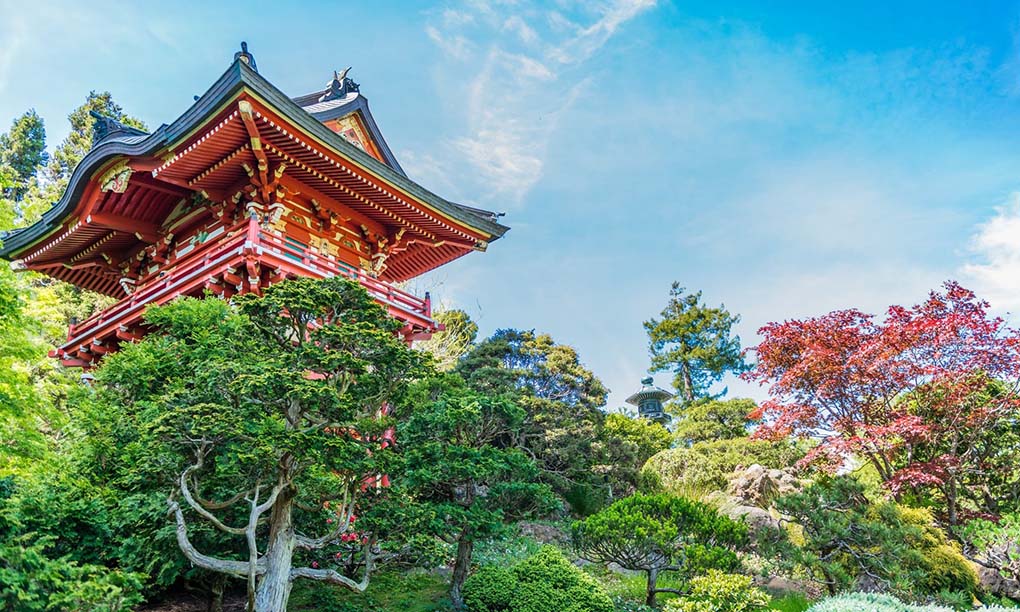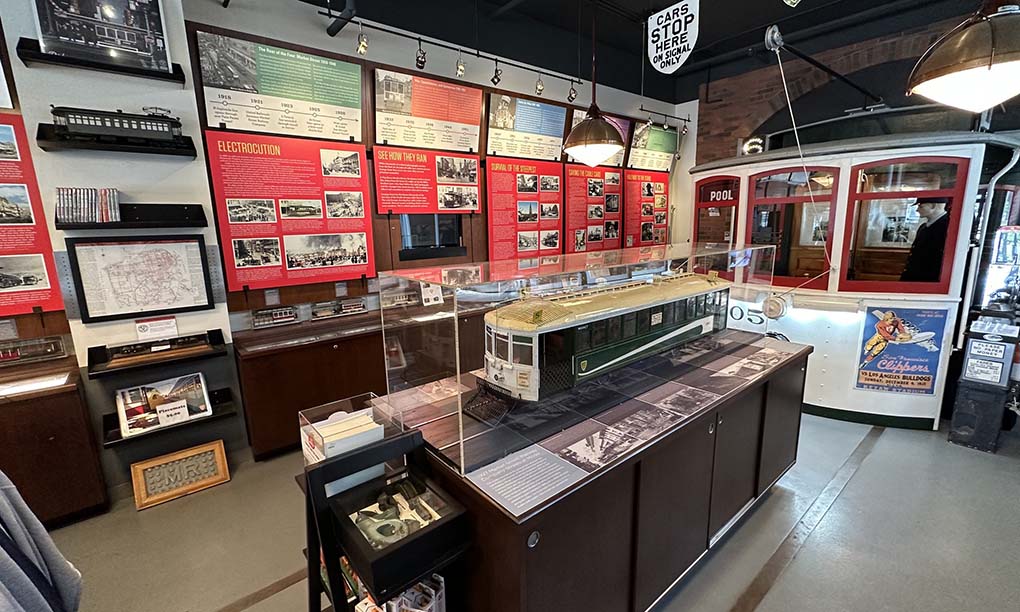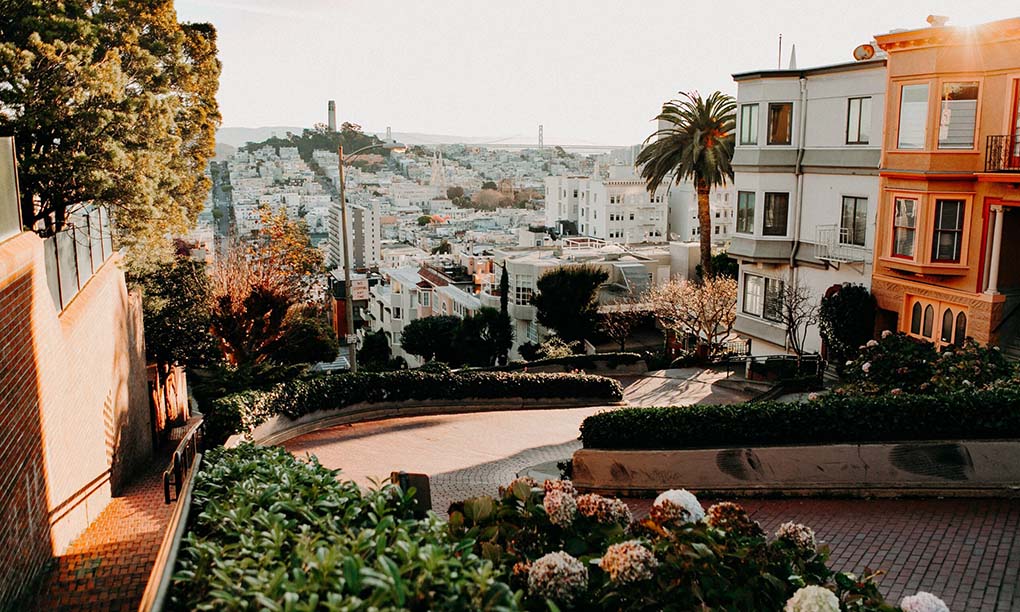San Francisco, a city where the echoes of the past resonate through iconic landmarks, unfolds a captivating tapestry of history awaiting exploration. This in-depth journey recounts my experiences at three historical landmarks and recommends four others that beckon history and culture enthusiasts.
Alcatraz Island: A Prison in the Bay
Location: Alcatraz Island, San Francisco, CA 94133
Route: Accessible by ferry from Pier 33.
Pros: Rich history, immersive audio tours, scenic views.
Cons: Crowded, weather-dependent ferry schedules.
Alcatraz, with its storied past as a federal prison, stands as a captivating historical gem nestled in the heart of San Francisco Bay. Embarking on the ferry ride to the island is not merely transportation; it’s the prelude to an adventure steeped in the echoes of the past. The views of the city skyline from the ferry are nothing short of breathtaking, providing a perspective of San Francisco that is both awe-inspiring and humbling.
As I set foot on the island, the immersive nature of Alcatraz’s history unfolds. The audio tour, narrated by former inmates and guards, transforms the desolate cells into vivid narratives of hardship and resilience. Walking through the cold hallways, I could almost feel the weight of the stories etched into the walls. The authenticity of the experience is both chilling and enlightening.
However, the popularity of Alcatraz comes at a cost—the island can be overwhelmingly crowded, especially during peak visiting hours. Navigating through the throngs of fellow visitors sometimes hindered the intimate connection with the historical surroundings. To mitigate this, planning a visit during off-peak hours or on weekdays is advisable.
The ferry schedules, being weather-dependent, add an element of unpredictability to the journey. Checking the weather forecast and ferry schedules in advance is crucial for a seamless and enjoyable visit. Despite the challenges posed by the crowds and weather, the overall experience at Alcatraz is unparalleled. The island, with its rich history and haunting atmosphere, offers a unique glimpse into the darker chapters of America’s past, making it a must-visit for history enthusiasts and curious explorers alike.
Golden Gate Park: Oasis of Nature and Culture
Location: Golden Gate Park, San Francisco, CA 94121
Route: Easily accessible by car, public transportation, or on foot.
Pros: Vast green spaces, cultural institutions, diverse attractions.

Cons: Limited parking, potential for crowds on weekends.
As I entered Golden Gate Park, the vastness of nature and the allure of cultural offerings unfolded before me. The park, a sprawling oasis in the heart of San Francisco, effortlessly intertwines lush green spaces with captivating cultural attractions. One can easily lose themselves in the tranquility of nature while being just steps away from world-class museums and diverse points of interest.
The de Young Museum and the California Academy of Sciences, nestled within the park, cater to both art and science enthusiasts. The de Young’s striking architecture is complemented by its diverse collection of American art, providing a visual feast for museum-goers. Meanwhile, the California Academy of Sciences boasts an aquarium, planetarium, and a living roof, offering a multifaceted exploration of the natural world.
The Japanese Tea Garden presents a picturesque retreat. Strolling through its carefully manicured landscapes and traditional structures provides a tranquil contrast to the bustling city surroundings. The delicate beauty of the garden, complete with koi ponds and cherry blossom trees, transports visitors to a different realm.
Despite its many attractions, Golden Gate Park does present some challenges. Limited parking spaces, especially on weekends, can be a deterrent for those planning to drive. The potential for crowds, particularly around popular attractions, may diminish the peaceful ambiance sought by visitors. To fully embrace the park’s offerings, exploring on foot or utilizing public transportation emerges as the more convenient and rewarding option.
Golden Gate Park is a harmonious blend of nature and culture, a haven where the urban and the natural coexist seamlessly. The park’s limitations, such as limited parking and potential crowds, are minor inconveniences in comparison to the wealth of experiences it has to offer. Navigating the park on foot or by public transportation ensures a more immersive and enjoyable exploration of this San Francisco gem.
Chinatown: A Tapestry of Culture
Location: Chinatown, San Francisco, CA 94108
Route: Accessible by foot, cable car, or public transportation.
Pros: Rich cultural experience, culinary delights, historical landmarks.
Cons: Crowded, potential language barriers.
Stepping into San Francisco’s Chinatown is like entering a vibrant tapestry, woven with rich cultural threads. The journey begins at the iconic Dragon Gate, a symbol marking the entrance to this historic enclave. As I meandered through Grant Avenue, the main thoroughfare, I found myself surrounded by a blend of traditional and modern elements, creating a unique and dynamic atmosphere.
Historical landmarks dot the landscape, each telling a story of the community’s resilience and contributions. The Dragon Gate, adorned with intricate details, serves as a welcoming portal. The architecture, the red lanterns, and the vibrant storefronts collectively contribute to the neighborhood’s distinct charm.
Culinary exploration is a highlight of Chinatown, with each corner offering a new delight for the senses. One standout experience was at Yank Sing, an acclaimed dim sum restaurant on Stevenson Street. The moment I stepped inside, the lively hum of conversation and the alluring aroma of freshly steamed dumplings enveloped me. The service was impeccable, and the staff’s expertise in the menu added an authentic touch to the dining experience. From delicate shrimp dumplings to crispy spring rolls, each bite was a symphony of flavors.
However, the vibrant streets of Chinatown come with their challenges. The area is often crowded, especially during peak hours, which can impact the leisurely exploration of its treasures. Navigating through the throngs of people requires patience and a willingness to embrace the energetic ambiance.
Language barriers may also be encountered, adding an additional layer of authenticity to the experience. Engaging with locals, though sometimes challenging due to linguistic differences, can unveil hidden gems and provide a deeper understanding of the community.
To escape the main thoroughfares and delve into a more intimate experience, I found that exploring lesser-known alleys and side streets proved rewarding. These quieter corners often reveal hidden shops, local art, and a more genuine glimpse into the daily lives of Chinatown residents.
Chinatown is a captivating microcosm of culture, history, and culinary delights. Despite the crowds and occasional language challenges, the richness of the experience far outweighs these minor inconveniences. Engaging with the community, savoring diverse cuisines, and discovering hidden gems within the bustling streets create a tapestry of memories that makes Chinatown an essential stop for anyone seeking an authentic and immersive San Francisco experience.
Recommendations:
Presidio of San Francisco: Military Legacy and Natural Beauty
Location: Presidio of San Francisco, San Francisco, CA 94129
Route: Accessible by car, public transportation, or bike.
Pros: Historic military sites, hiking trails, scenic vistas.
Cons: Limited public transportation within the park.
The Presidio of San Francisco, a former military stronghold transformed into a national park, stands as a testament to both historical legacy and natural beauty. Nestled at the tip of the San Francisco Peninsula, the Presidio offers a unique blend of well-preserved military architecture and breathtaking landscapes.
One of the notable features of the Presidio is its array of historic military sites. The Officers’ Club, with its adobe walls dating back to 1776, provides a glimpse into the area’s colonial past. Exploring the parade grounds and former barracks transports visitors to a different era, allowing them to connect with the military history that unfolded within these walls.
The park is also a haven for outdoor enthusiasts, offering an extensive network of hiking trails that wind through cypress and eucalyptus groves. These trails not only provide a picturesque escape from the urban hustle but also lead to scenic vistas overlooking the Golden Gate Bridge and the Pacific Ocean. The convergence of history and nature creates a unique and enriching experience for visitors.
Despite its many attractions, the Presidio presents some challenges, particularly in terms of transportation within the park. While it is accessible by personal vehicles, public transportation options within the Presidio are limited. This makes personal vehicles or bikes preferable for those looking to explore the park thoroughly. Navigating the park by bike allows for a more leisurely exploration of its vast expanses.
The Cable Car Museum: A Journey through Transportation History
Location: Cable Car Museum, 1201 Mason St, San Francisco, CA 94108
Route: Accessible by foot, cable car, or public transportation.
Pros: Educational exhibits, working cable machinery, free admission.
Cons: Limited space, can get crowded.
The Cable Car Museum, nestled on Mason Street, stands as a captivating homage to San Francisco’s iconic transportation system. As one enters, a journey through the history of cable cars unfolds, offering a unique perspective on the city’s development and growth.

The museum boasts a wealth of educational exhibits that detail the intricate mechanisms behind the cable car system. From the earliest designs to the evolution of the technology, visitors gain a comprehensive understanding of the engineering marvel that defines San Francisco’s public transportation. The highlight, undoubtedly, is witnessing the working cable machinery in action—a mesmerizing display that brings to life the power and precision required to move these historic vehicles.
One of the museum’s significant advantages is its free admission, making it an economical choice for those seeking to delve into San Francisco’s transportation history without breaking the bank. This accessibility ensures that locals and tourists alike can appreciate the cultural and historical significance of the cable car system.
However, the museum’s compact size does present a challenge. The limited space may result in crowds, particularly during peak hours or tourist seasons. To fully savor the experience and explore the exhibits without feeling rushed, planning a visit during off-peak hours is advisable. This strategic approach allows for a more intimate encounter with the artifacts and a deeper appreciation of the museum’s offerings.
The Haas-Lilienthal House: Victorian Elegance Preserved
Location: Haas-Lilienthal House, 2007 Franklin St, San Francisco, CA 94109
Route: Accessible by car, public transportation, or on foot.
Pros: Well-preserved Victorian architecture, guided tours.
Cons: Limited visiting hours, guided tours may require reservations.
The Haas-Lilienthal House, an exquisite embodiment of Victorian elegance, graces the streets of San Francisco on Franklin Street. This meticulously preserved mansion stands as a testament to the city’s architectural heritage, offering visitors a step back in time to the opulence of a bygone era.
One of the notable advantages of the Haas-Lilienthal House is the impeccable preservation of its Victorian architecture. The ornate details, from the intricately carved woodwork to the stained glass windows, transport visitors to an era of refined aesthetics and meticulous craftsmanship. The exterior, with its grand facade and well-manicured gardens, sets the stage for the historical journey that awaits within.
Guided tours further enhance the visitor experience by providing in-depth insights into the history and significance of the mansion. Knowledgeable guides lead guests through the various rooms, recounting tales of the Haas and Lilienthal families who once called this architectural gem home. The guided tours not only unravel the stories embedded in the mansion’s walls but also shed light on the broader context of San Francisco’s elegant past.
However, a couple of drawbacks need consideration when planning a visit. The Haas-Lilienthal House has limited visiting hours, making it essential for prospective visitors to check the schedule in advance. Additionally, guided tours may require reservations, especially during peak visiting times or for larger groups. Planning ahead ensures a seamless and enriching experience, allowing visitors to fully appreciate the historical and architectural significance of this Victorian masterpiece.
The Beat Museum: Exploring the Literary Beat of San Francisco
Location: The Beat Museum, 540 Broadway, San Francisco, CA 94133
Route: Accessible by foot, public transportation, or cable car.
Pros: Literary artifacts, immersive exhibits, unique cultural experience.
Cons: Limited space, may not appeal to all interests.
The Beat Museum stands as a hidden gem within the vibrant tapestry of San Francisco. Located on Broadway Street, this museum serves as a celebration of the influential Beat Generation, offering visitors a unique journey into the literary heritage of the city.
One of the notable advantages of The Beat Museum is its impressive collection of literary artifacts. Rare manuscripts, letters, and personal belongings of renowned Beat poets are meticulously curated, providing a tangible connection to the literary giants who once roamed the streets of San Francisco. The museum’s commitment to preserving this cultural legacy is evident in the authenticity of its exhibits.
Immersive exhibits further enhance the visitor experience, allowing a deep dive into the counterculture movement that defined an era. The museum’s design and layout create an atmosphere that mirrors the unconventional spirit of the Beat Generation. From the vibrant artwork to the iconic photographs, each element contributes to a rich narrative that encapsulates the essence of the literary movement.
However, it’s essential to consider that The Beat Museum’s charm may not appeal to all interests. The focus on a specific literary and cultural niche might limit its broader appeal. Visitors seeking a more traditional museum experience may find the subject matter less engaging.
Due to its size, the museum can become crowded, impacting the overall experience, especially during peak hours. To fully absorb the immersive journey into the Beat Generation, visiting during off-peak hours is advisable.
San Francisco’s historical landmarks, each with its unique story to tell, weave together a narrative that spans centuries. From the somber cells of Alcatraz to the vibrant streets of Chinatown, the city’s rich history unfolds at every turn. As I conclude this detailed exploration, I encourage fellow travelers to delve into the past, to wander through the layers of history that have shaped San Francisco into the captivating tapestry it is today. Whether exploring the military legacy of the Presidio or immersing oneself in the literary beats of the city, each landmark invites discovery, offering a glimpse into the soul of this iconic city.
Tags: Chinatown, Presidio of San Francisco, The Cable Car Museum